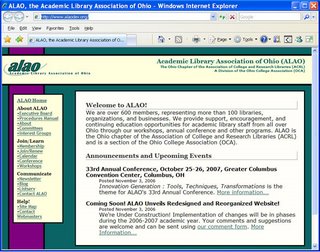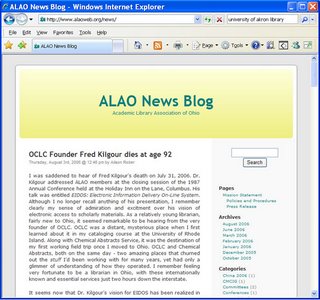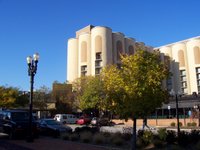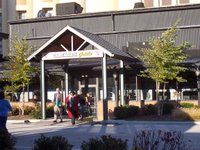The IRC serves a dual function in AU Library. We are not only a floor of the library chock full of resources for education majors, we also facilitate a lab class taken by every education major. During fall semester the number of students taking this class ranges from150 - 250. In the spring it is significantly less, but each student will step foot in the library and IRC at least twice during the term. The portfolio due date is the last day of classes, December 8th. Traffic in the resource center is amazing and through the years an interesting trend has emerged during the week prior to finals. Our "regulars," those who often call the IRC home, make themselves scarce in the evenings. They stop in, say hi, tell us they will return on Monday, and leave the physical space to the newbies finishing portfolios. The IRC space is effectively turned over to a class.
During finals week, they come back! In addition to the regular crowd, new students begin to discover the IRC as a place. The IRC population consists of students using the space for papers, group projects, and studying. It is somewhere they are comfortable working. We have worked several years bringing this concept of space to fruition and there is a definite feeling of accomplishment walking around the second floor when tables and computers both are full.
Last year the library director experimented with significantly longer library operating hours. LibQual survey results and a follow-up student focus group vocalized their desire for longer library hours. They did not necessarily want specific library services, they did, however, want the library open as a study space. They needed some space on campus that would enable them to get out of dorm rooms and 24 hour computer labs. The library responded with extended hours. Sunday through Thursday, from November 27th to Wednesday, December 13th, AU Library is open 7:45 am to 2 am. After the regular closing time of 11 pm, students are able to use the library as a space. Restrictions include the following; circulation and reference services are not available after 11 pm, extended hours do not include the Instructional Resource Center (IRC), and printing is not available on the second floor after 11 pm. Restrictions aside, from 11 pm to 2 am, the library is a place. Maybe the place.
The ultimate success of this project depends on advertising (student newspaper, library web site, library blogs, library signs, and email), word of mouth (Did you know the library was open late?), and student satisfaction (students began inquiring when the extended hours would begin before Thanksgiving break). Let's hear it for the library as a place!
Tags: Academic Libraries, Extended library hours, Library as a place, Finals week hours





